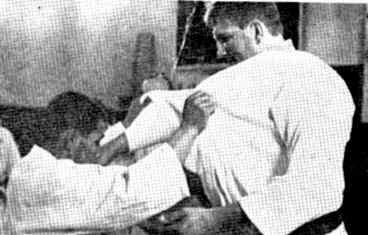I'm slow, I know. But I just realized...
.
When people would ask Karl for advice on "good" technique and "proper" form, frequently he would say, "You can do anything you want if you have perfect timing." He beat us to death with drills that worked largely on timing - and largely on timing of footsteps.
.
All of his heuristics that we took as law - that we thought were THE gospel way to do aikido correctly - those were not actually THE way, they were his preferred, suggested ways to handle the problems caused by imperfect timing. All of our heuristics can be seen as backup plans for imperfect timing.
.
Why do we do the same hand/foot straight arm thing? Because it makes us stronger when our timing fails.
.
Why do we do tsugiashi instead of ayumiashi? Because it makes us more stable when we miss our timing.
.
Why do we spend so much time on reflexive ukemi? Because tori is either going to get the timing right, in which case uke will need good ukemi, or tori will screw up the timing, in which case, tori will need good ukemi as a backup plan.
.
It's all about the timing, because if you have perfect timing then your form does not matter.
.
Of course, nobody has perfect timing - that's why we spend so much effort on timing drills and why we have so many backup plans that we all recommend keeping in place all the time.
.
And that's why the masters , the guys that trifle with us in randori and make us look dumb, appear to break all the rules that they just told us was the right way to do aikido - they break the rules and they still come out on top because they have better timing than we do.
Want to discuss this blog post?
Come find me on Facebook at my Mokuren Dojo FB group
____________________
Patrick Parker
www.mokurendojo.com






